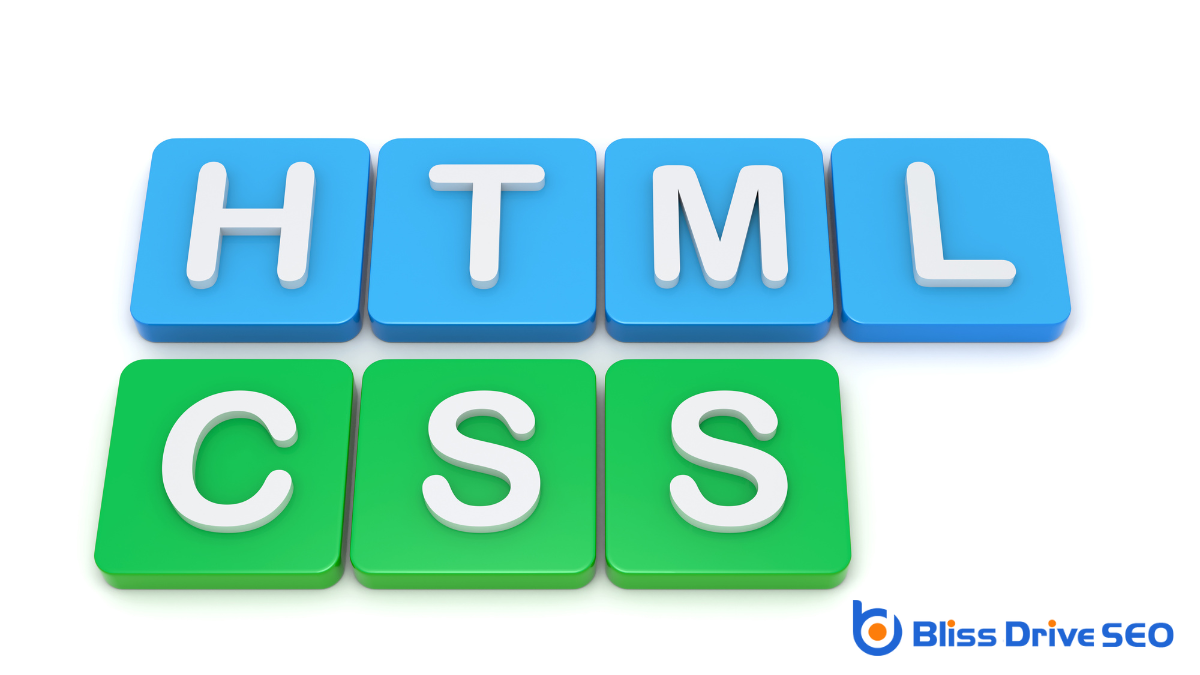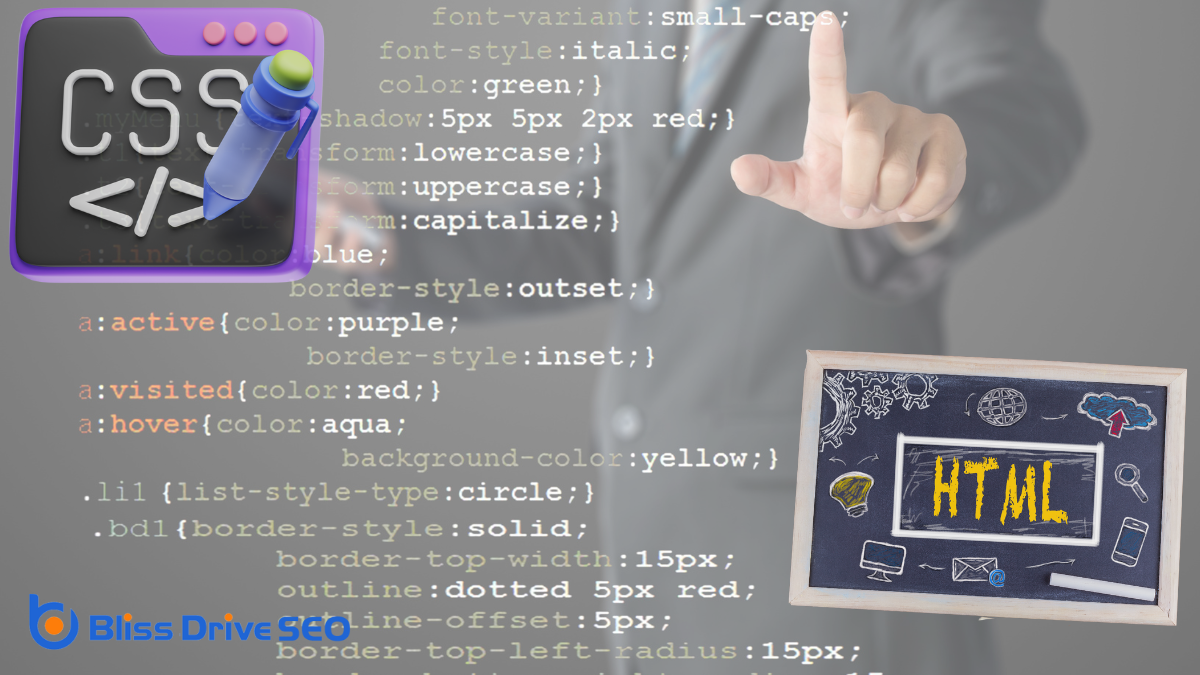Digital Marketing Services
Learn More About Us

You've probably encountered HTML and CSS if you've ever dabbled in web development. They're both essential, yet they serve distinctly different purposes. HTML is like the skeleton of a webpage, outlining the structure with tags and elements. On the other hand, CSS is the designer responsible for the color, style, and overall look of your webpage. Understanding how they complement each other is vital for crafting effective web applications. But what happens when you combine these two languages? How do they transform a bland webpage into a dynamic user experience? Let's explore this further.
HTML, or Hypertext Markup Language, serves as the backbone of any web page. It's what you use to structure your content, allowing browsers to interpret and display your text, images, and other multimedia elements.
When you create an HTML document, you're fundamentally building the skeletal framework of your website. Each element, like headers, paragraphs, lists, and links, is marked up with specific tags to define its purpose and position within the page.
To begin with HTML, you don't need any special software—just a simple text editor will do. You'll start with a basic structure: the '' declaration, followed by the '', '', and '' tags.
The '' contains meta-information like the page title and links to external resources. The '' holds the visible content.
Understanding HTML is vital because it gives you control over how your content is organized. For example, you can use '
While HTML forms the skeleton of your web pages, CSS, or Cascading Style Sheets, adds the flair by dictating how that content looks.
Think of CSS as the artist of your web design, bringing color, layout, and style to otherwise plain HTML structures. It lets you control the visual presentation, ensuring your site doesn't just function well but also looks appealing to your audience.
To start with CSS, you'll need to understand selectors, properties, and values. Selectors target the HTML elements you want to style. For example, if you want to change the appearance of all paragraphs, you'd use the 'p' selector.
Properties define what you want to change, like color or font size, and values specify how you want to change it, such as turning text blue or setting it at 16 pixels.
CSS can be included directly in your HTML file using inline styles, embedded in the head section, or linked as an external stylesheet.
External stylesheets are the most efficient, as they keep your HTML clean and allow you to apply styles across multiple pages.

Understanding the distinction between HTML and CSS is essential for effective web development. While both are fundamental to creating web pages, they serve different purposes.
HTML, or Hypertext Markup Language, is the backbone of any web page. It provides structure by defining elements like headings, paragraphs, links, and images. Think of it as the skeleton that holds everything together.
On the other hand, CSS, or Cascading Style Sheets, is all about presentation. It gives you control over the look and feel of the webpage. With CSS, you can change colors, fonts, spacing, and layout. It's like the clothing and makeup that dress up the skeleton provided by HTML. Without CSS, your web page would look plain and unstyled.
Another key difference lies in their syntax and placement. HTML uses tags enclosed in angle brackets, while CSS uses selectors and declarations within curly braces.
You typically write HTML directly in the body of your document, whereas CSS can be written in a separate file or within the HTML file itself using the style tag.
To create a fully functional and visually appealing web page, it's vital to understand how HTML and CSS work in tandem. HTML, or Hypertext Markup Language, provides the structure of your web page. Think of it as the skeleton that organizes content, such as headings, paragraphs, and images. Without HTML, you'd have no foundation for your site's content.
On the other hand, CSS, or Cascading Style Sheets, is what adds life to the structure. It allows you to apply styles like colors, fonts, and layouts to your HTML elements. CSS is a tool that transforms plain HTML into something visually engaging and user-friendly.
By separating content (HTML) from presentation (CSS), you gain greater control over the look and feel of your site. When you link a CSS file to your HTML document, you're enabling them to work together seamlessly.
The browser reads the HTML to understand the content and then applies the CSS styles to display it as intended. This collaboration guarantees your web page isn't only functional but also aesthetically pleasing.
Understanding the synergy between HTML and CSS is fundamental for crafting effective web pages that communicate and engage.
Building on the synergy between HTML and CSS, let's explore how these technologies come to life in practical applications. When you visit a website, you're witnessing HTML and CSS working in harmony. HTML provides the structure, like a skeleton, defining elements such as headings, paragraphs, and links. CSS, on the other hand, is like the skin and clothes, styling these elements with colors, fonts, and layouts to enhance user experience.
Imagine you're creating a personal blog. You'd use HTML to lay out the main content sections: a header, a main content area, and a footer. CSS then allows you to add aesthetic appeal, like transforming your header with a bold font and coloring it to match your brand. It also lets you make your site responsive, ensuring it looks good on both desktops and mobile devices.
In e-commerce, HTML structures product listings, while CSS provides visual styles that make products look attractive, potentially increasing sales. You can also use CSS animations to add interactive elementsElements that require user interaction, such as buttons, forms, and sliders., making your site more dynamic and engaging.
Essentially, you'll find that HTML and CSS complement each other perfectly in web development. HTML lays the foundation by structuring your content, while CSS adds flair and style, bringing your web pages to life. By understanding their distinct roles, you can effectively harness both to create visually appealing and well-organized websites. Remember, mastering how they work together will empower you to develop engaging and dynamic web experiences for your audience.
